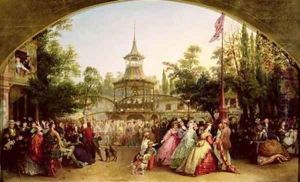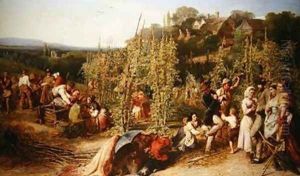Phoebus Levin Paintings
Phoebus Levin was a German artist and photographer whose work spanned the latter half of the 19th century and the early part of the 20th century. Born in 1843 in Germany, Levin grew up during a period of significant social and political change in Europe. His early life and education, though not extensively documented, likely immersed him in the rich cultural and artistic heritage of Germany, which was experiencing a resurgence of interest in romanticism and realism.
Levin's artistic journey began in the realm of painting, but he is most notably recognized for his contributions to photography, a field that was emerging and rapidly evolving during his lifetime. He was among the pioneering photographers who explored and experimented with new techniques and subjects, contributing to the establishment of photography as a legitimate form of artistic expression.
Throughout his career, Phoebus Levin captured a variety of subjects, including landscapes, cityscapes, and portraits, showcasing not only his technical skill but also a keen eye for composition and detail. His work reflects the transitional period in art, where the traditional meets the modern, and serves as a valuable document of the era's social, cultural, and technological advancements.
Levin was not only a practitioner but also an advocate for the art of photography. He was involved in various artistic circles and associations, promoting photography as a discipline and sharing his knowledge and skills with fellow artists and enthusiasts. Despite the recognition and respect he garnered among his contemporaries, Phoebus Levin's name is not as widely known today outside of specialized art and photography circles.
He passed away in 1914, on the eve of significant global upheavals that would further transform society and the arts. Levin's legacy, however, lives on through his contributions to the development of photography and his preserved works, which continue to be studied and admired for their historical value and artistic merit. Through his explorations and innovations, Phoebus Levin played a part in shaping the direction of visual arts, bridging the gap between the traditional and the emerging modern aesthetic of his time.



